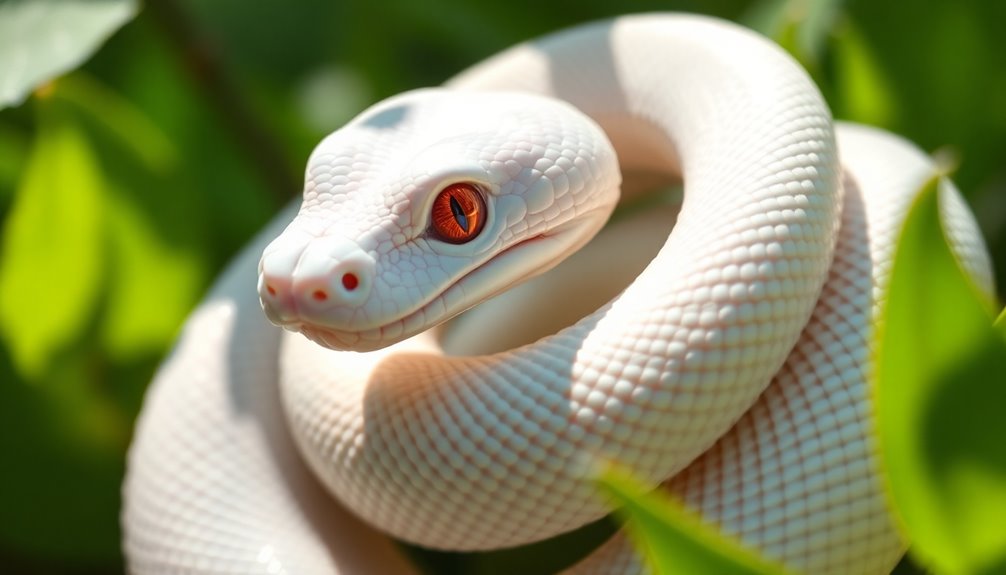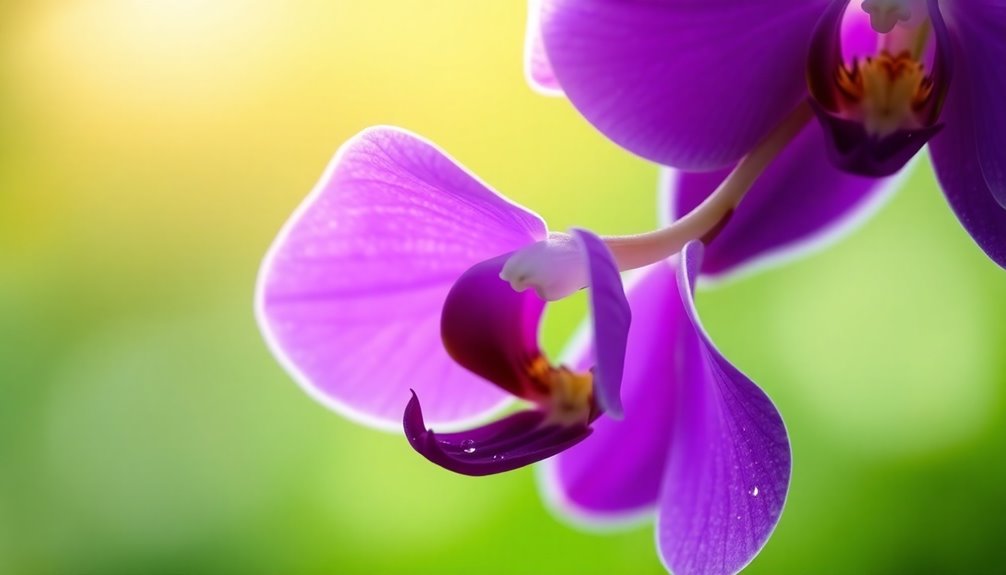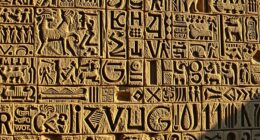When a white owl crosses your path, it's a sacred omen you shouldn't overlook. This majestic creature symbolizes wisdom, intuition, and transformation, guiding you through life's challenges. Many cultures view white owls as spiritual messengers, offering protection and insight. They might herald impending changes or serve as reminders to trust your intuition. If you've spotted one, reflect on its significance and what it might mean for your current circumstances. Embracing this omen can lead to profound personal growth and clarity. Discover more about the deeper meanings behind the white owl's message and how it can impact your journey.
Key Takeaways
- White owls symbolize wisdom and intuition, guiding you through life's complexities and encouraging personal growth.
- Seeing a white owl can signify good luck, urging you to trust your instincts and embrace forthcoming opportunities.
- White owls often represent transformation and renewal, indicating significant life changes or new beginnings on your horizon.
- They serve as spiritual messengers, connecting you to higher consciousness and prompting introspection during challenging times.
- In various cultures, white owls are seen as protective spirits, offering guidance and clarity as you navigate your life's journey.
Types of White Owls
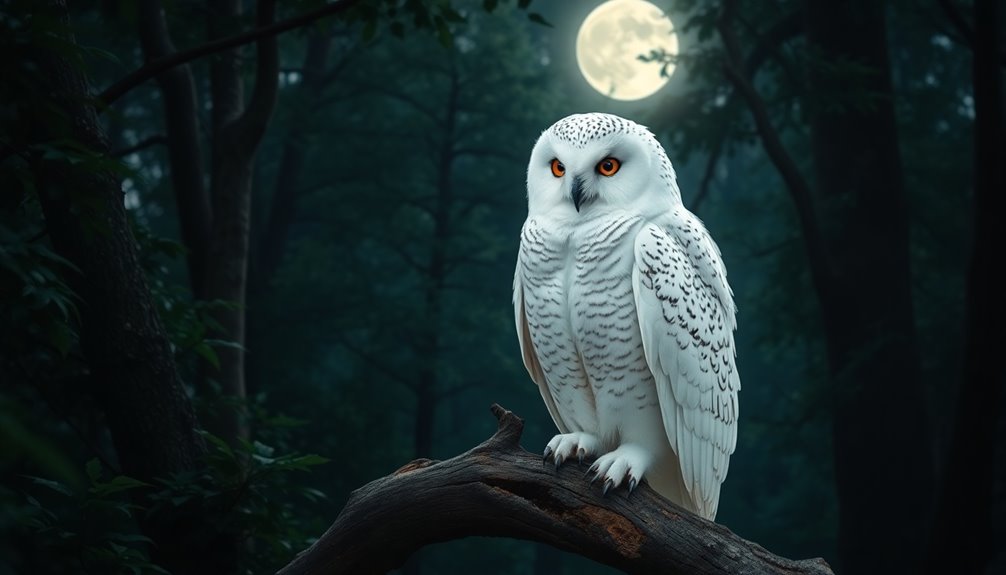
When you think of white owls, the snowy owl often comes to mind, with its striking plumage and majestic presence in the Arctic. However, several other white owl species hold significant cultural and spiritual meanings as well.
The barn owl, with its heart-shaped face and white underparts, is one of the most recognizable nocturnal creatures globally. Its ghostly appearance adds to its symbolism, often representing a connection to the spirit world.
In North America, the barred owl can appear white, featuring distinctive horizontal bars on its chest. Known for its unique hooting calls, it holds a special place in folklore among American tribes, symbolizing wisdom and intuition.
Meanwhile, the northern white-faced owl boasts a striking white face and is primarily found in Africa, showcasing the diversity of white owl species across the globe.
These owls, adorned with white feathers, embody various owl symbolism, often linked to intuition and inner wisdom. Each type of white owl you encounter can inspire reflection on spiritual meaning and guidance, inviting you to explore the deeper connections these magnificent creatures hold.
Symbolism of White Owls
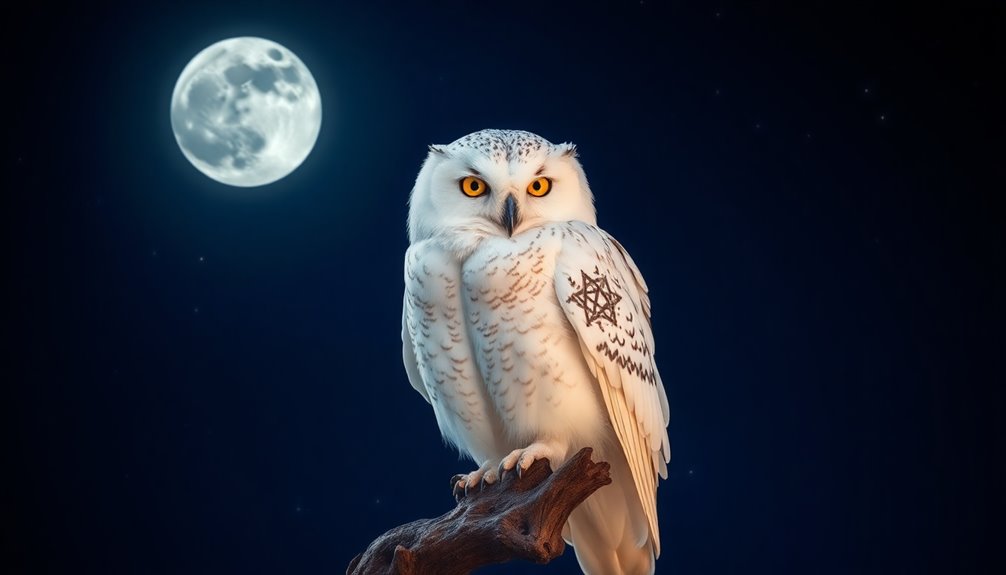
The symbolism of white owls is rich and multifaceted, often embodying wisdom and intuition that guide you through life's complexities. These majestic creatures are seen as spiritual messengers, connecting you to the divine and offering insights that help navigate changes.
In various cultures, particularly within Native American traditions, white owls symbolize transformation and renewal, heralding significant life alterations and spiritual awakenings.
When you encounter a white owl, it's often interpreted as a good luck omen, signaling imminent fortune and heightened awareness in your life. Their presence invites you to embrace the wisdom they carry, encouraging you to trust your intuition and instincts.
White owl symbolism isn't just about good fortune; it also encompasses the balance of light and shadow, representing both wisdom and the inevitability of change.
These owls act as spirit guides, reminding you that life is a journey filled with lessons. As you reflect on the white owl's meanings, consider how they resonate with your current circumstances and aspirations.
Spiritual Significance
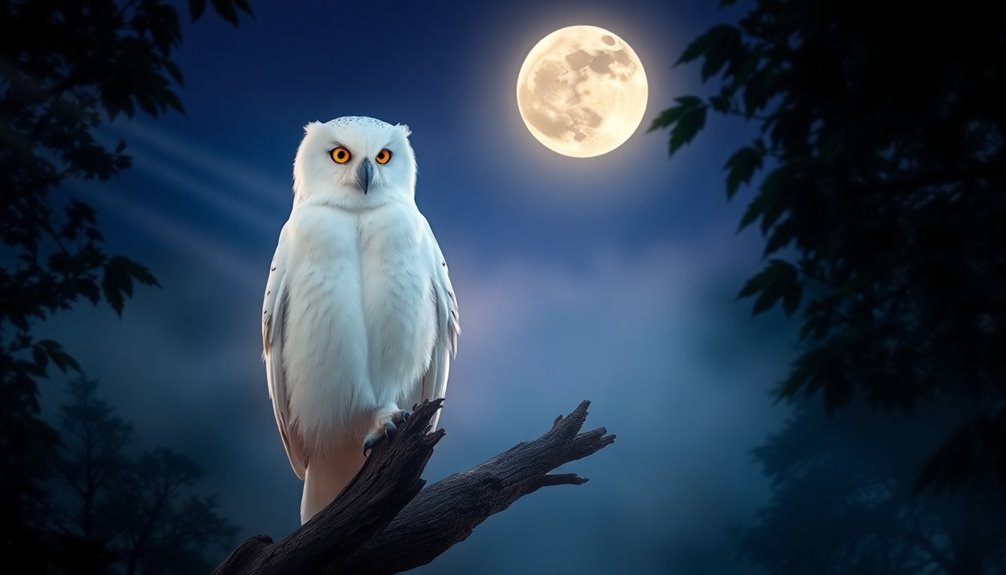
White owls hold profound spiritual significance, serving as powerful guides that bridge the material and spiritual worlds. When you encounter a white owl, it symbolizes wisdom and serves as a messenger, carrying esoteric knowledge meant for you. This majestic creature encourages transformation in your life, urging you to embrace personal growth and significant changes.
The presence of a white owl often signifies a time for introspection. You might find yourself reflecting deeply on your surroundings and inner feelings, gaining insights during challenging moments. In this way, the white owl acts as a spiritual protector, offering guidance and clarity. It's a reminder to tap into your higher consciousness and seek truth in your journey.
Furthermore, white owls are associated with purity, emphasizing the importance of cleansing negative energies and thoughts. Their wisdom invites you to explore the depths of your spirit and develop a deeper connection to the universe.
Cultural Interpretations
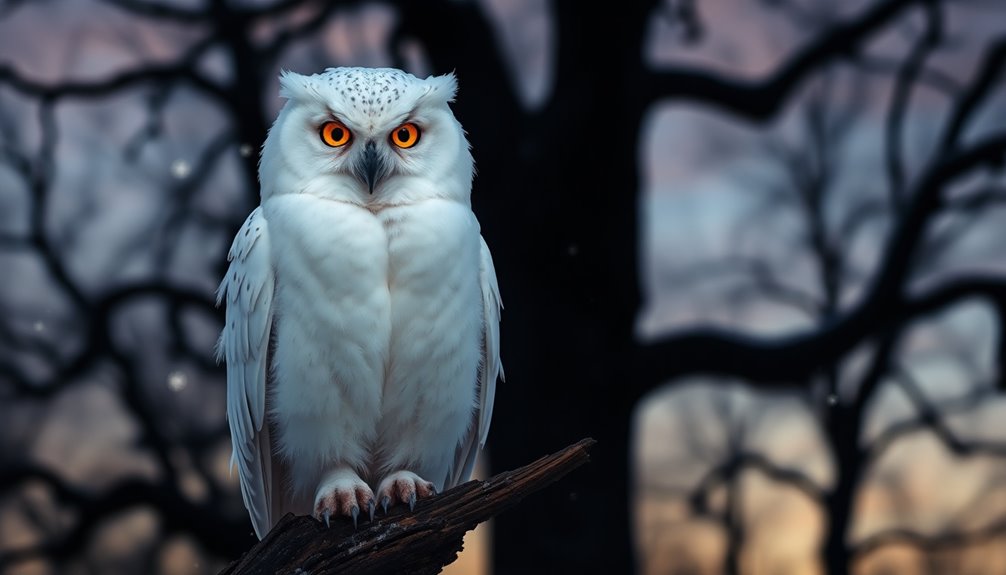
When you explore cultural interpretations of white owls, you'll find a fascinating blend of meanings.
In Greek mythology, they symbolize wisdom and protection, especially in times of decision-making.
Conversely, Native American beliefs often view them as omens of death, highlighting the owl's role as a guide between life and the spirit world.
Greek Mythology Wisdom
Owls hold a significant place in Greek mythology, especially as symbols of wisdom and insight. The goddess Athena, revered for her knowledge and strategic prowess, is often depicted with her owl, reinforcing the bird's association with enlightenment and protection in battle. When you encounter an owl, particularly a white one, it may serve as a spiritual omen, guiding you toward victory and clarity.
Here are three key aspects of owls in Greek mythology:
- Symbol of Knowledge: Owls represent the pursuit of knowledge, reminding you to seek wisdom in your decisions.
- Guidance in Battle: The presence of an owl was believed to bring strategic insight, vital for leaders and warriors.
- Metaphor for Enlightenment: The term "owl of Athena" illustrates how deeply embedded these creatures are in the cultural understanding of wisdom.
In ancient cultures, owls were frequently depicted in art and pottery, embodying the significance of wisdom in society.
Greek philosophers often referenced owls in their teachings, emphasizing that wisdom is essential for maneuvering life's complexities and achieving true enlightenment.
Native American Omens
In Native American cultures, the sighting of a white owl often carries deep spiritual significance, acting as a potent omen of transformation and change. When a white owl appears in your life, it may signal an important shift, urging you to reflect on your inner thoughts and the changes ahead. Tribes view these encounters as warnings or calls to introspection, emphasizing the necessity to pay attention to your surroundings.
The symbolism of white owls varies among tribes. For the Lakota people, they're seen as messengers from the spirit world, bridging the gap between the living and the dead. Their presence can guide lost souls and provide clarity during times of change. This connection to the spiritual dimension highlights their role in guiding the afterlife and understanding ancestral spirits.
Moreover, the feathers of white owls are considered sacred, embodying wisdom and protection against negative energies. When you encounter a white owl, remember that it's not just a simple sighting; it's a profound omen, inviting you to embrace transformation and seek guidance from the spirit world on your journey toward change.
Dream Meanings

Dreaming about a white owl can reveal deep insights and guidance in your life. This powerful omen often signifies a protective spirit watching over you, urging introspection and personal growth.
Here are three key dream meanings associated with the white owl:
- Good Luck: In many cultures, a white owl symbolizes positive fortune. Your dream may be a sign to trust your intuition and seize opportunities on the horizon.
- Transformation: A white owl appearing in your dreams often indicates significant changes ahead. Embrace these transformations, as they can lead to new beginnings and enhance your spiritual significance.
- Insight into Fears: If your dream is unsettling, it might reflect unresolved issues or fears. Acknowledge these feelings, as addressing them is essential for personal growth and emotional clarity.
Environmental Symbolism
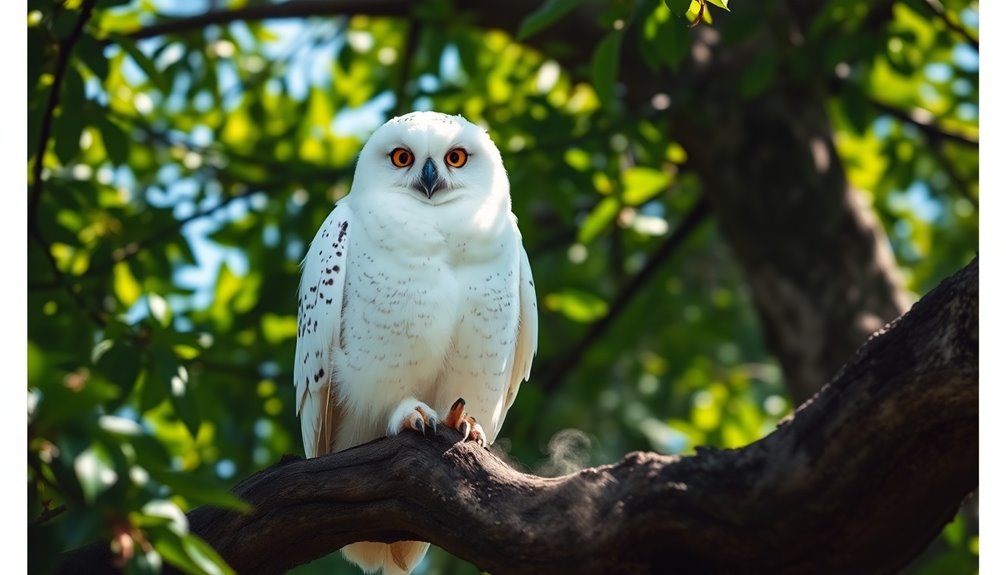
The presence of white owls in an ecosystem serves as a essential indicator of environmental health and balance. These magnificent creatures symbolize wisdom and reflect the overall biodiversity of their habitats. When you see a white owl, it's a sacred sign that the ecosystem is stable. They thrive on a healthy abundance of prey, like rodents, demonstrating the interconnectedness of species within their environment.
However, a decline in white owl populations can signal an ecological imbalance, often due to habitat loss or other environmental stressors. This decline prompts conservation efforts aimed at preserving biodiversity and protecting natural habitats from the impacts of climate change.
By focusing on the conservation of white owls, we emphasize the importance of maintaining a stable ecosystem where every species plays an essential role. Ultimately, white owls are more than just beautiful creatures; they're ecological indicators that remind us of our responsibility to uphold the balance of nature.
Good Luck Associations
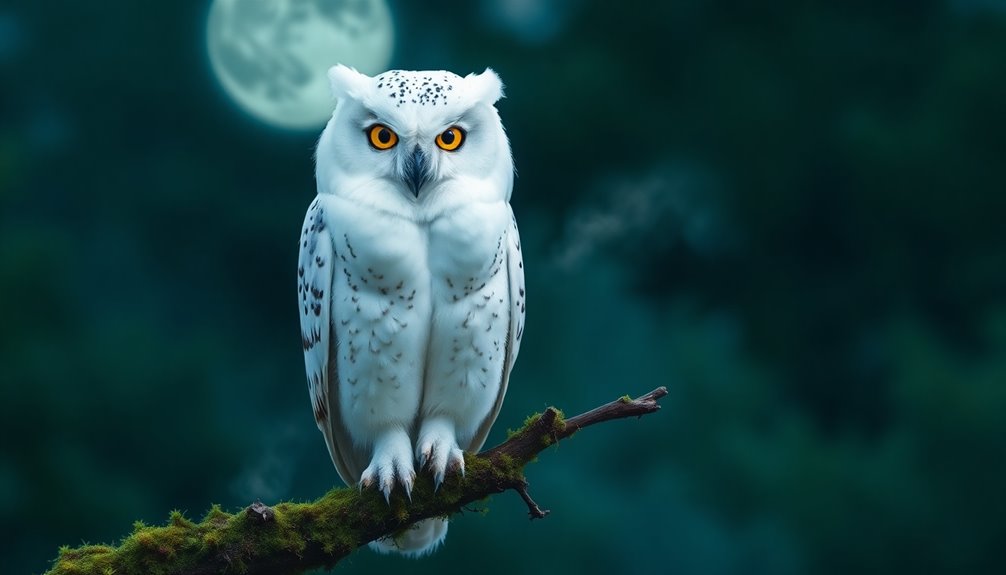
Seeing a white owl often brings a sense of wonder and hope, as many cultures believe it's a powerful symbol of good luck. This enchanting bird is more than just a beautiful sight; it represents auspicious outcomes and positive transformations in your life.
Here are three key associations with white owls and good luck:
- Spiritual Protection: In Native American traditions, white owls serve as protectors, guiding you toward inner wisdom and shielding you from negative influences.
- Prosperity and Happiness: The Ainu people of Japan view these owls as tokens of good fortune, believing their presence can lead to increased prosperity and overall happiness.
- Financial Gain: In Chinese culture, encountering a white owl is an omen signaling potential personal or financial gain, encouraging you to embrace opportunities that arise.
The rarity of spotting a white owl amplifies its good luck associations, inviting you to reflect and gain deeper insights.
Whether you see it as a harbinger of change or a sign of spiritual guidance, a white owl offers a unique perspective on life's journey.
Embrace its message, and let it inspire your path forward.
Conservation and Protection
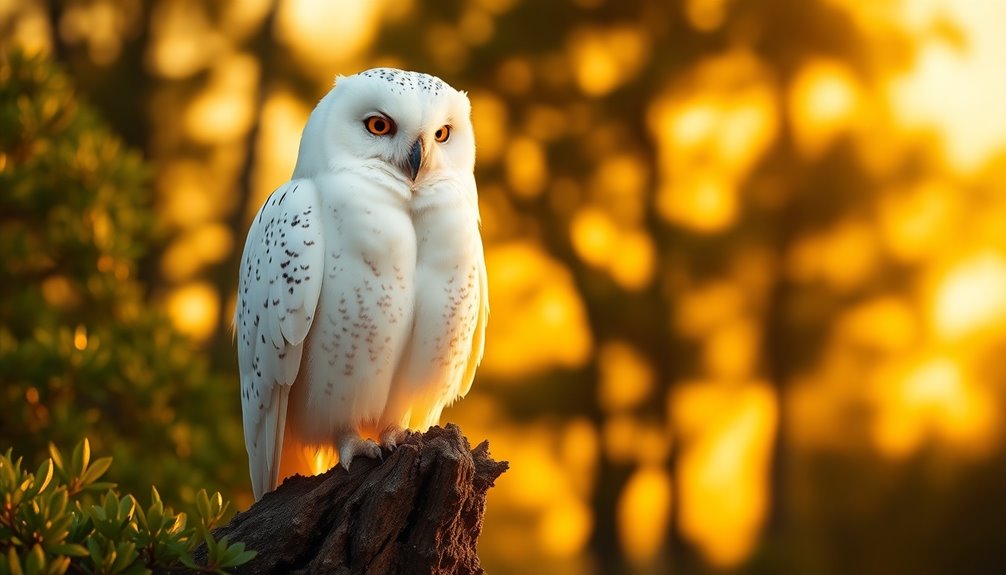
How can we guarantee the survival of white owls in a world increasingly affected by climate change and habitat loss? It starts with robust conservation efforts aimed at protecting snowy owls and their habitats. Organizations like the National Audubon Society and BirdLife International are pivotal in addressing these threats by researching the ecological needs of snowy owls and implementing effective conservation strategies.
You can help by raising awareness within your community about the importance of preserving ecosystems that support these majestic birds. Your involvement can enhance habitat protection and promote biodiversity, benefiting not just snowy owls but also other wildlife. Participating in local conservation initiatives, like habitat restoration projects, can make a significant impact.
Moreover, legal protections under wildlife conservation laws, such as the Migratory Bird Treaty Act, are essential to safeguard snowy owls from hunting and habitat destruction. By supporting these measures and advocating for stronger protections, you play a fundamental role in ensuring the survival of white owls for future generations.
Together, we can create a more sustainable world where snowy owls thrive amidst the challenges of climate change and habitat loss.
Frequently Asked Questions
What Does a White Owl Mean Spiritually?
A white owl spiritually represents wisdom and intuition. When you encounter one, trust your instincts and reflect on your life path. It's a sign urging you to embrace transformation and spiritual awakening in your journey.
What Is the Spiritual Meaning of Seeing an Owl?
Seeing an owl's like stumbling upon a wise old sage! It signifies deep intuition and transformation. You're urged to trust your instincts, embrace change, and connect with your inner self for guidance during life's twists.
What Does a White Owl Symbolize in the Bible?
In the Bible, a white owl symbolizes desolation and abandonment. Its nocturnal nature reflects spiritual darkness, highlighting separation from the divine. You might interpret these signs as warnings about moral choices and their consequences.
What Is the Myth of the White Owl?
In the tapestry of mythology, the white owl weaves tales of wisdom and transformation. You'll find it symbolizes change, often linked to spirits guiding souls, and embodies the duality of life and death in various cultures.
Conclusion
As you reflect on the white owl's message, remember that its presence isn't just a fleeting moment; it's a call to action. Are you ready to embrace the wisdom it brings? This sacred sign urges you to decode its meanings, revealing paths to transformation and insight. But beware—ignoring it could mean missing out on profound revelations. So, keep your heart open and your mind alert. The white owl's secrets await you, just beyond the horizon.


